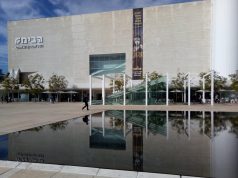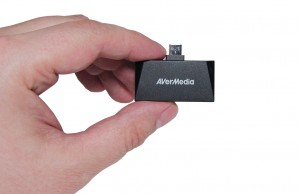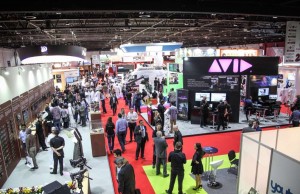Video delivery solutions by Harmonic are the most in-demand among telecom companies in Ukraine (and other FSU countries). Harmonic has its offices in the USA and Israel. The Mediasat has already featured the latest innovation EyeQ, an AI-based solution. During the visit to the Harmonic’s Israeli office, we managed to speak to the staff and learned more about the company’s external and internal processes.

Meir Litmanovich, Sales Manager
We work towards both the development of existing technologies, and the new ones. Among the existing ones there are everything associated with encoding, transcoding, multiplexing, the range of products includes hardware, coders, software… Today, the company is actively investing in the development of cloud solutions, CableOS. The next step forward is dockers, i.e. platforms for fast and comfort operation with virtualized applications…
The force for the industry is actually 4K and HDR. We also have some solutions for VR, but I do not know how popular this trend will be, because a VR picture should be of high quality, and requires unrealistic data traffic.
What markets are seeking after dockers and cloud services?
As usual, the flagship industry is the North America; but there are also outbursts in Southeast Asia, in Singapore, for example. They are followed closely by Western Europe, Eastern Europe and post-Soviet countries. For the time being, there are large projects in America and Europe. Anyhow, everything depends on ARPU and the end consumer’s solvency.
What projects are you currently implementing in Ukraine?
This is EyeQ, a technology that allows transferring video without quality losses, even with a limited bandwidth. We continue our traditional projects like equipment for satellite communications, teleports and OTT (Viasat Ukraine based on “Kyivstar” network). Previous projects are also on, i.e. ProStream multiplexers with ACE cards for IPTV by Ukrtelecom and other operators.
Our equipment is handy because with the advent of new technologies or in case the company wants to expand functions, it is just enough to add a new software version to the existing equipment. For example, if “Ukrkosmos” or Viasat want to broadcast in HEVC partially or fully, then it is only a matter of a new software license, which was hard to impossible before. This refers to the new EyeQ solution: the software is installed on an existing coder, a license is bought, and that’s it. The Harmonic equipment, used by “Ukrkosmos” and Viasat in Ukraine, can be applied for DTH. The coders that actually serve Viasat for OTT are the same “boxes” to install for DTH.
How is Harmonic represented in the other countries?
We secure the entire DTH market of Kazakhstan, starting with Kazteleradio/ “OTAU TV”, having more than a million DTH subscribers. However, not all of them are the paid ones, the rest are social platforms. Since the country is very large, it requires three centers like Uralsk, Alma-Ata and Astana to receive and
uplink satellite channels. We support these centers, as well as satellite TV operators like “Caspio HD” and “Alma TV”, and the latter has some 20 thousand DTH subscribers. In general, 90% of operators in FSU countries use our equipment.
Turkmenistan hosted sports events to broadcast all over the world, first the government negotiated with one of the world leaders in content delivery (CDN), but for some reason that company failed, they built a different CDN, and the broadcasts were carried out by us. Many things had to be arranged remotely, for Turkmenistan had a much-exaggerated secrecy, and it was even complicated to get a visa there, what to say about access to TV equipment.
In Georgia we have long been working with Magticom, which was a mobile operator, and then decided to become DTH, so, we built a platform for them in Stockholm, and then moved it to Tbilisi. Magticom acquired Caucasus Online, which was top third pay-TV operator in Georgia also having our equipment, which is now consolidated in a single pair of hands. As for Georgia, there is operator “Silknet”, an analogue of Ukrtelecom, our large OTT and IPTV customer having all transcoding systems by Harmonic.
When it comes to Israel, then the quality of all solutions is about the Internet bandwidth and CDN, because our entire Internet goes through one host in Cyprus. There are no problems with content passing through the cache or local, but if the servers are far away, then it may cause some problems. That is why
video compression technologies are vital.
We are not integrators, and everything runs around with video. The task we most focus on is how to make a high-quality picture with a cost-effective bitrate. Year after year, we manage to reduce bitrate by 15-20% while keeping picture quality.
Do Ukrainian OTTs have any marketing potential in in the Israeli market? After all, Ukrainian content is not represented there, for some reason…
I don’t know why there are no Ukrainian channels on the common Israeli platforms Hot and Yes. I feel this is a failure of the channels themselves, since there are many returnees here and these channel would be in demand.
Janna Fridman, Q&A team leader at Harmonic
At the first stage, we get a feature (new function), and then we examine it. When it is finished, the developers test it, proving that the feature works. They provide information about the detected bugs, and we decide whether to accept it. In practice, we accept 90% of features, since there are no serious problems
to conduct tests. After that, we draft our plan for the next test, subject to approve by Q&A system developers. The detailed tests are registered in the Quality Center. The next stage is direct feature testing.
If we identify bugs we turn to the developer, so that he would fix them, then we have another checkup,making sure that there are no bugs interfering with operation. Depending on the complexity, this process takes from three days to six weeks.
All this is checked using special equipment (the equipment occupies a separate room called a “lab” – where we are forwarding – I.S.). These devices receive video, multiplex and transcode it (the ability to display video on different devices),
scramble it (protection against unauthorized access), etc. This equipment also provides an opportunity for our partners to monitor signal quality and processes.
The Q&A Team accounts for 6 employees. There is also an outsourced team in Ukraine, working at the company Global Logic.
Harmonic outsources the Ukrainian office of the US Company Global Logic.
Dror Levin, streaming manager
We have around 150 employees in Kyiv. We started with few projects four years ago. Now they are doing a big part of Harmonic projects. They develop for both cable and video. Almost every team in Harmonic has an extension in Kyiv. The tasks that teams are to fulfill often depend on where the equipment is located. There are very close and friendly atmosphere between Harmonic and Global Logic stuff, we feel like a one team. There is a separate floor for Harmonic in Global Logic office there.
Is it the only one Ukrainian company you cooperate with?
Yes.
Do you have the same experience with other countries?
We have a team in India. In this case culture is more different from Israeli, US or Ukrainian. We don’t feel any cultural gap with Ukrainian team. It’s young and modern guys.






















